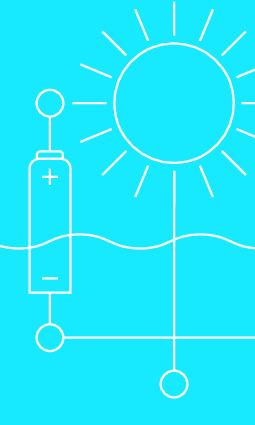|
|
|
| Module code: EE-K2-529 |
|
|
2V (2 hours per week) |
|
2 |
| Semester: 4 |
| Mandatory course: no |
Language of instruction:
German |
Assessment:
Term paper
[updated 30.06.2025]
|
EE-K2-529 (P200-0009) Energy system technology / Renewable energies, Bachelor, ASPO 01.10.2012
, semester 4, optional course
EE-K2-529 (P200-0009) Energy system technology / Renewable energies, Bachelor, ASPO 01.04.2015
, semester 4, optional course, course inactive since 27.10.2016
MAB.4.2.3.15 (P200-0009) Mechanical and Process Engineering, Bachelor, ASPO 01.10.2013
, semester 4, optional course, course inactive since 01.03.2022
MST.EBI (P200-0009) Mechatronics and Sensor Technology, Bachelor, ASPO 01.10.2012
, optional course, technical, course inactive since 13.10.2015
MST.EBI (P200-0009) Mechatronics and Sensor Technology, Bachelor, ASPO 01.10.2019
, optional course, technical, course inactive since 13.10.2015
MST.EBI (P200-0009) Mechatronics and Sensor Technology, Bachelor, ASPO 01.10.2020
, optional course, technical, course inactive since 13.10.2015
MST.EBI (P200-0009) Mechatronics and Sensor Technology, Bachelor, ASPO 01.10.2011
, optional course, technical, course inactive since 18.04.2016
|
30 class hours (= 22.5 clock hours) over a 15-week period.
The total student study time is 60 hours (equivalent to 2 ECTS credits).
There are therefore 37.5 hours available for class preparation and follow-up work and exam preparation.
|
Recommended prerequisites (modules):
None.
|
Recommended as prerequisite for:
|
Module coordinator:
N.N. |
Lecturer: N.N.
[updated 17.10.2011]
|
Learning outcomes:
After successfully completing this module, students will have an overview of what bionics can do.
They will be able to recognize analogies between nature and technology.
They will be able to apply methods to find solutions.
[updated 30.06.2025]
|
Module content:
1. Introduction to bionics
2. History of bionics
3. Construction bionics 1
Design, Mattheck, lightweight construction
4. Construction bionics 2
Materials, composite materials, bonding
Targeted adhesion and release
5. Construction bionics 3
Locomotion, walking, robotics
6. Construction bionics 4
Locomotion, water, air
7. Construction bionics 5
Nanobionics
8. Process bionics
9. Information bionics
Bionic organization, evolutionary bionics
10. Pseudobionics versus scientific bionics
11. The future of bionics
[updated 30.06.2025]
|
Teaching methods/Media:
DVD accompanying the lecture
[updated 30.06.2025]
|
Recommended or required reading:
Das große Buch der Bionik, W. Nachtigall
[updated 30.06.2025]
|


